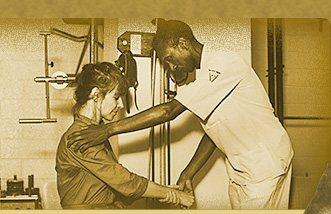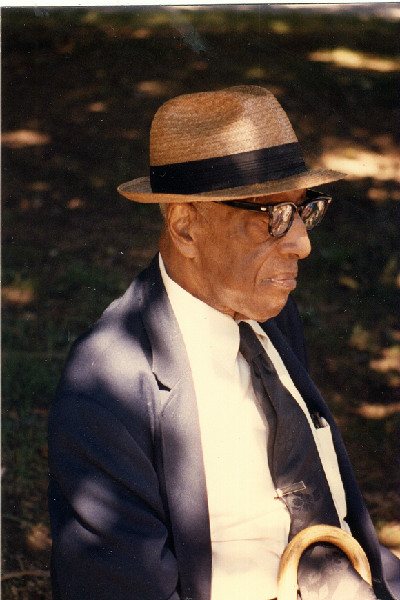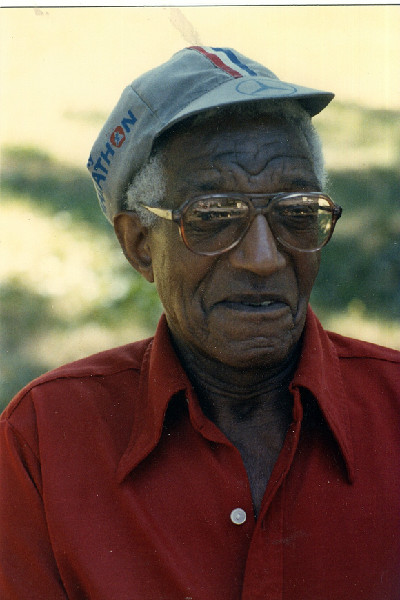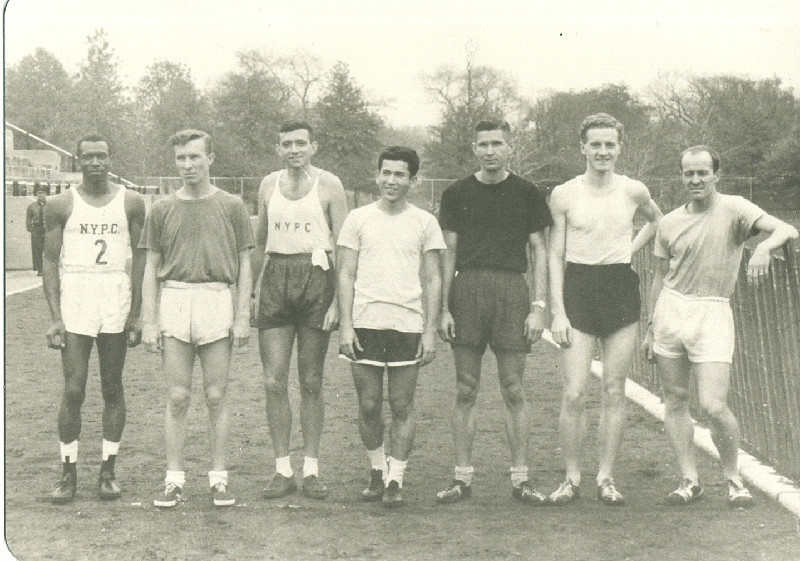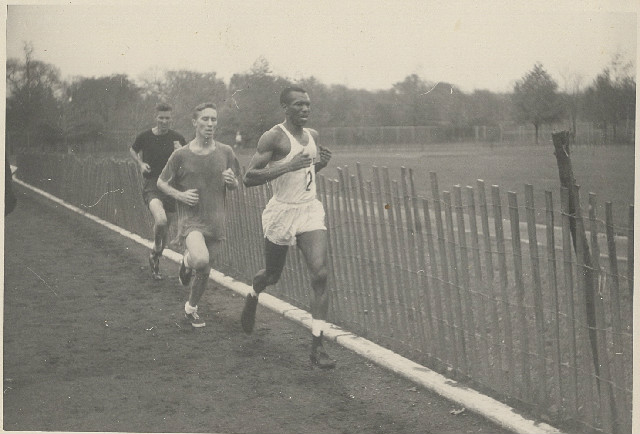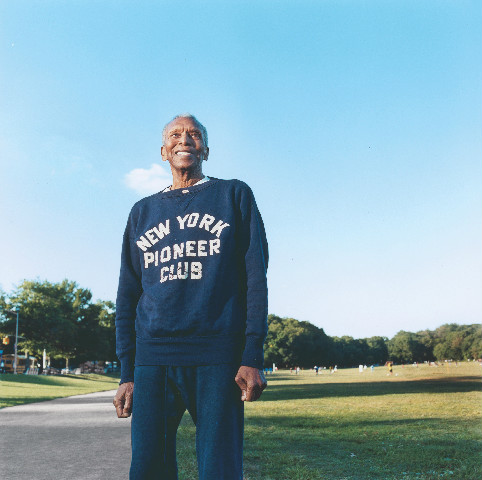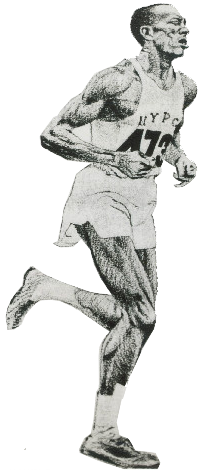
New York Pioneer Club
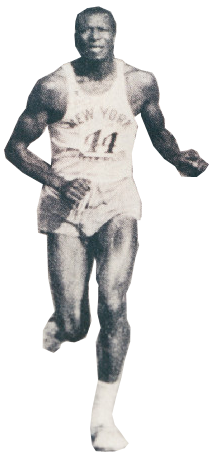
New York Pioneer Club (NYPC)
History’s Most Unique Athletic Team
Mr. Joseph J. Yancey Jr. – Founder & Coach
Civil Rights Leadership through Sports
New York Pioneer Club: Team Origins & Mission:
The athletic club was founded in 1936 by three African Americans; Joseph J. Yancey, Robert Douglas and William Culbreath in 1936 in Harlem, New York. Robert Douglas was manager of the Renaissance Casino and the Harlem Rens Basketball team.
The clubs 1942 constitution stated:
The object of this organization is to support, encourage, and advance athletics among youth of the New York Metropolitan district, regardless of Race, Color or Creed.
To encourage and further the ambition of our youth for higher education that they might become intelligent, civic – minded citizens, and to work toward a better racial understanding through the medium of education and sports.
The Pioneer Creed: The Pioneer Club, a club of gentlemen and athletes. This does not signify mere outward refinement. It speaks of a refined and noble mind, to which anything dishonorable, mean or impure is abhorrent and unworthy.
The NYPC team was a means of building men of character; gentleman as athletes and citizens. Gentlemen first, athletes second
Team Leaders:
Coach - Mr. Joseph J. Yancey 1936 - 1991
Manager - Assistant Coach – Edward Levy 1943 - 1991
Coach – Edward J. Levy 1991 - 2001
Historic Training Facility – 369th Regiment Armory:
Is a historic National Guard armory in Harlem, New York for the 369th Infantry Regiment that fought in World War 1 for the French Army. They were known as “The Hellfighters of Harlem” based on their distinguished war record.
The NYPC trained and held track meets at this armory for many years.
A United States Leader in Racial Integration: 1940s, 1950s, 1960s
NYPC was one of the first large scale inter-racial clubs in any sport amateur or professional.
Predated integration in professional sports
1946: National Football League – Kenny Washington – Los Angeles Ram
1947: Major League Baseball – Jackie Robinson – Brooklyn Dodgers
1950: National Basketball Association – Earl Lloyd – Washington Capitols
Integrated College Athletic Programs 1946 – 1947:
Joseph Yancey & NYPC was the catalyst for integrating college athletic programs 1946-1947 Pioneers Bill Lucas and Bob Carty were the first African American scholarship track athletes at Manhattan College and integrated the school’s program. Pioneers Wilbur Cunningham, Jim Ryan and John Johnson were the first African American scholarship track athletes at St. John’s University and integrated the school’s program.
History’s most unique Track & Field Team:
This integrated club fielded championship athletes and teams in all disciplines.
Track & Field
Long Distance Running
Race Walking
Ultramarathoning
Served as a model for other track & field teams:
University of Chicago Track Club
Los Angles Striders
Philadelphia Pioneer Club
Athletes Developed Into:
Track Coaches
Influential administrators in the sport
A variety of professional and civic professions
NYPC Represented All Racial and Ethnic Groups:
African American
Caribbean
Irish
Italian
Jewish
Puerto Rican
White Anglo Saxon Protestant
The Athletes:
| Bob Beamon 1968 Olympian – Long Jump | Set a Long Jump record that lasted 22 years |
| Harry Bright Middle Distance Runner | Executive Director City of White Plains Commission on Human Rights |
| Roscoe C. Brown Distance Runner | President of Bronx Community College Tuskegee Airmen |
| Roscoe Lee Browne 1949 National Champion | Film, Television and stage performer Academician |
| John Carlos 1968 Olympian – 200 Meters | Black Power Salute at the Olympics |
| Roy Chernock Sprinter, Hurdler, Long Jump | William & Mary Track & Field Coach |
| Ted Corbitt 1952 Olympian – Marathon | First President of New York Road Runners Physical Therapist |
| Elliott Denman 1956 Olympian – 50K Race Walk | Asbury Park Press Journalist |
| Larry Ellis IC4A Cross Country Champion | First African American to coach an Ivy League team at Princeton |
| Meredith Gourdine 1952 Olympian – Long Jump | Engineer and Physicist |
| Byron LaBeach 1952 Olympian - 100 Meters | Operated a Food Distribution Company |
| Edward Levy Manger – Coach | “The Father of Caribbean Track & Field” Public School Principal |
| Bill Lucas 1949 NCAA Cross Country – 3rd | Sheriff of Wayne County, Michigan Ran for Governor of Michigan |
| Hugh (Hugo) Maiocco 1951 National Champion 600yds | Family Physician |
| Craig Masback 3:52 Miler | CEO USA Track & Field |
| Gordon McKenzie Olympian 1956 & 10960 | Engineer: Borough President of the Bronx |
| Oscar Moore 1964 Olympian- 5,000 Meters | Glassboro/Rowan UniversityTrack & Field Coach Pastor |
| Reggie Pearman 1952 Olympian - 800 Meters | Educator & Peace Corps |
| Allan Steinfeld Distance Runner | President of New York Road Runners Club |
| Fred Thompson Track Athlete | Founder & Coach - Atom Track Club Meet Director - Colgate Women's Games |
| Bruce Wright | New York State Supreme Court Justice |
Two Athletic Clubs New York Pioneer Club (NYPC) and New York Athletic Club (NYAC)
One was inclusive and other exclusive
| NYPC | NYAC | |
|---|---|---|
| Year Started | 1936 | 1868 |
| Membership | Open to all | Excluded black & Jewish athletes |
| Athletes | All abilities | Elite athletes only |
| Finances | Underfunded | Highly Funded |
| Staffing | Volunteers | Paid |
| Club House/Headquarters | No | Yes |
Joseph J. Yancey
(1910-1991)
Co-founded the New York Pioneer Club in 1936 and became its first coach. Joe’s coaching career spanned a half century. He coached numerous indoor and outdoor national champions, including 18 Olympians.
He was the first coach to go abroad for the U.S. State Department, traveling around the world to coach, give lectures, conduct clinics and serve as a good will ambassador.
Served as Olympic coach in the following Olympic Games:
Jamaica – 1948, 1952, 1956
Trinidad – 1948, 1956
Bahamas – 1956, 1960
British Guiana – 1960
U.S. Virgin Islands – 1968
Barbados – 1972
All of these accomplishments were done on a volunteer basis. Joe Yancey was a revenue officer with the Internal Revenue Service for over thirty year.
Joe Yancey devoted the majority of his life and much of his money to keep the New York Pioneer Club going. He always was true to the “welcome all” policy. All Joe asked was that they be gentlemen first, athlete second.
Joe did a lot of talking about being a gentleman first and the values of sportsmanship and growing up to become good citizens.
Other New York Pioneer Club (NYPC) History Themes:
The NYPC was instrumental in the formation and survival of the New York Road Runners Club (NYRR) in 1958. Joe Yancey was the first coach to join NYRR. Today this running organization is the largest local running community in the world boasting over 60,000 members.
NYPC members became leaders in many areas outside of sports.
NYPC members became coaches for college and international track teams.
Running clubs like the University of Chicago Track Club followed the lead of NYPC fielding an integrated team. A case can made that the sport of running was a leading force in racial integration in the 1940s, 1950s, and 1960s.
NYPC was unique in many ways, including the number of champions in Track & Field, Road Running, and Race Walking.
NYPC members also became administrative leaders in all aspects of track and road running.
Gary Corbitt
Curator: Ted Corbitt Archives
March 26, 2013
The New York Pioneer Club: A Civil Rights History
FEB 12, 2021
By – Pamela Cooper Chenkin
New York Road Runners became the diverse and inclusive organization it is today thanks to a Harlem track club. NYRR and the TCS New York City Marathon are a gift to the world from New York City’s Black community and the New York Pioneer Club of Harlem.
The NYPC was founded in 1936 by Robert L. Douglas, William Culbreath, and Joseph J. Yancey as a track club for Harlem citizens who had neither the funds nor expertise to join one of the city's competitive teams.1 It was open to any young man who wanted to join.
The Appeal of Track and Field
Track and field had a strong allure in the 1930s. “When we were young, both magic and awe were defined by a 9.9 sprinter or a 4.10 miler, and those who wrought such miracles in time and space,” wrote one contemporary.2
The Depression had hit Harlem hard. Black churches, political organizations, and social societies set up programs to distribute food and clothing, even small amounts of money, and to find jobs.3 After-school supervision and recreation were among the priorities when both parents worked long hours far from the home.4
Political and economic unrest swept the community. On March 19, 1935, the apprehension of a young shoplifter on 125th Street was followed by a series of misunderstandings that ended in rumors of the shoplifter's death. The incident assumed racial overtones, and thousands of people protested.5 Harlem came through the experience with a new unity and a greater awareness of political and social inequities. Harlemites revitalized their existing institutions and created ancillary associations to supplement them,6 while new Black political vehicles engaged many people who had not previously been active.7
New York City had an economically stable Black middle class8 that used political pressure to promote Black civil rights9 as well as secure New Deal assistance for Black families. Black delegates were present at the Democratic National Convention for the first time in 1936.10 The Black middle class was also the source of civic organizations that supported economic and social stability.11
More Than a Running Club
The New York Pioneer Club was a product of that Black middle class. Robert L. Douglas was the owner of the Harlem Renaissance basketball team, William Culbreath was a trainer at New York University, and Joseph J. Yancey was in the undertaking business; he had participated in athletics in high school and college (he was a graduate of New York University) and later ran for and coached the Mercury Athletic Club of Harlem.12
As well as athletics, the NYPC promoted education, a salient value of the Black middle class.13 The NYPC constitution stated the objective “To encourage and further the ambition of our youth for higher education that they might become intelligent, civic-minded citizens, and to work toward a better racial understanding through the medium of education and sports.”
The new club soon appeared in AAU competitions, with six entries at the July 1936 senior metropolitan championships.14 At the World Labor Athletic Carnival held on August 15-16, 1936, at Randall’s Island, the NYPC placed third in the one-mile relay, its first team placed fourth in the 440-yard relay, and NYPC member DeOtis Taylor took second in the 220-yard low hurdles.15
The Pioneers had no clubhouse. Yancey, a reserve captain in the 369th Regiment, got them into the 369th AAA Armory at 142nd Street and Fifth Avenue in winter; in nice weather they ran at Macombs Dam Park in the Bronx, a popular training venue for cross-country and long-distance runners. White runners saw the group and began training with them,16 fostering Yancey's plans for racial cooperation. (The track at Macombs Dam Park is now named for Yancey, as shown in the photo above.)
Civil Rights in NYC and Beyond
Yancey was acting within a dynamic civil rights movement at both the municipal and national levels. In response to the March 1935 Harlem protests, New York City Mayor Fiorello LaGuardia established a biracial Commission on Conditions in Harlem. A year later the Commission issued a report listing police insensitivity, lack of affordable housing, and, above all, job discrimination as contributing factors to the protests.
The 1936 World Labor Athletic Carnival had been organized by the Jewish Labor Committee to protest the holding of the 1936 Olympics in Nazi Germany. As the U.S. prepared for war in 1941, Black leaders met in Harlem to demand equal access to government employment and integration of the Armed Forces; A. Philip Randolph, president of the Brotherhood of Sleeping-Car Porters, threatened an all-Black March on Washington. To avert this international embarrassment, President Roosevelt issued Executive Order 8802 in July 1941, prohibiting discrimination in hiring for work done under government contract.17
In New York City, where the Black population had grown to 500,000 by 1940,18 Blacks increased their political influence. Myles A. Paige had become the city’s first Black magistrate in 1936.19 In 1942 Adam Clayton Powell became the first Black elected to New York City’s City Council; later that year he became Harlem’s representative to Congress.20
The NYPC embraced the changes and hopes of the times. In 1942, the members rewrote the club's constitution so that white athletes could become official members.21 The 1942 constitution stated that “The objects of this organization are to support, encourage, and advance athletics among the youth of the Metropolitan District, regardless of Race, Color, or Creed.”
Yancey prepared young athletes for leadership as well as track performance. He later wrote, “Of equal importance to the clinics are daily lectures, sometimes before 'hitting the track' and usually during rest periods. The lectures concern the athletes’ diets, their habits of health, ethical conduct commensurate to the good health of their bodies, and their general track and field progress.”22
On the Pioneers' field trips, Yancey advocated polite, modulated speech along with correct table manners and dress. Competing members were not permitted to enter the meet venue without shirts, ties, and jackets. The club helped the needier members, buying them clothes and paying for haircuts. Community responsibility was Harlem's way, part of its activism; the club assisted some members' families with rent and utility bills. The Pioneers' founders had contacts with higher education that enabled them to suggest candidates for university scholarships.23
Joe Yancey and Civil Rights
On August 1, 1943 an incident in a Harlem hotel led to the shooting of a Black soldier by a white policeman. Although the soldier was only superficially wounded, rumor spread that he had been killed, and protests swept Harlem. The events led New York City and Harlem leaders to address the intertwined issues of discrimination, at-risk youth, and racial pride.24
The NYPC would probably have been just another great track team had not its mission to encourage higher education and racial understanding fit the model of Black assertiveness that resulted from these wartime disturbances. Joe Yancey was a civil rights activist whose reach across levels of economic status was part of the African-American and Black tradition of protest.25 "[W]e presented ourselves, as an integrated group, as a group of gentlemen, well-spoken, well-behaved," noted one member. "People had other expectations, but when they saw you in action that dispelled what myths they had in their minds about people. That was the main thrust of the thing, you know, not to mirror society, but to change it.”26
Yancey did not permit women to belong to the NYPC, a decision that was more strategic than sexist. In 1943, the Savoy Ballroom, a Harlem jazz dance club, was closed by the police department on charges of "vice."27 According to one historian, "Closing the Savoy seemed to have been prompted by race-mixing on the dance floor."28 Yancey was a civil rights activist, and a track man, who chose his battles; the possible presence of interracial couples on the team might have complicated the Pioneers’ struggle for fully integrated conditions surrounding track meets.
A Top-Flight Club That Took a Stand
Yancey prepared to fight for civil rights by building the NYPC into a top competitive club, probably one of the first to support full outdoor and indoor track and field teams.29 The club had a ready arena for action in that the AAU (the national governing body of track and field at the time) tacitly condoned racial inequities in track meets, sanctioning meets that covertly or openly practiced discrimination.30 Many of the white athletes coming into the Pioneer Club were Jewish, and they shared the Black members' concern with the AAU's prejudices. During the 1940s, Jews and Blacks forged an alliance based on their similar concerns about discrimination in employment, education, and housing.31 New York City became the most important center of this alliance, which extended into athletics; both groups faced blatant discrimination by the powerful New York Athletic Club.32
In 1944 and 1946, the Pioneers became team champions in the Metropolitan AAU junior track and field games. Months before the 1946 championship, the Pioneer Club stated its refusal to attend the upcoming June 28-9, 1946, AAU national track and field championships in San Antonio, TX, the first major open meet to be held in the South. The Pioneers objected to the social segregation; Black athletes were not permitted to stay at the same hotels as white athletes. This boycott meant that Pioneers such as Tom Carey, the 60-yard indoor champion, and Reggie Pearman, a 1:54.8 half-miler, would not compete. On June 19, 1946, the Grand Street Boys Association, an integrated team that included Black quarter-miler James Herbert as well as field athletes Bernie Mayer, Irving Kintisch, and Irving Mondschein, joined the Pioneers' protest.33
The Grand Street Boys Association did not forbid its members to go to the AAU Nationals; the club just refused to supplement in the expense money allotted them by the Metropolitan AAU. Mayer and Herbert received enough AAU funding to make the trip; Kintisch and Mondschein did not.34 Judge Jonah J. Goldstein, president of the Grand Street Boys, wrote to Charles Diehm, secretary-treasurer of the Metropolitan AAU, “Because of the Jim Crow practices prevailing in San Antonio, Texas, the Grand Street Boys Association is impelled to decline to sponsor that meet in any form.”35 In 1948, Mondschein, a high jumper, became the first athlete sent by the NYPC to the Olympic Games.
In 1948 and 1952, Yancey very successfully coached the Jamaican Olympic track team, but in both years the AAU had passed Yancey over in selecting coaches for the United States Olympic teams.36 Yancey instead coached Olympic teams from Jamaica, Trinidad-Tobago, Bahamas, British Guiana, U.S. Virgin Islands through 1968. The State Department sent him overseas to lecture and coach as a goodwill ambassador, and his work with the NYPC continued to send athletes to the Olympic Games.37
The Olympic Marathoner
Ted Corbitt (below, right) joined the New York Pioneer Club in 1947. In 1952, he placed sixth in the Boston Marathon and third in the Yonkers Marathon, performances that earned him a place on the 1952 United States Olympic Marathon Team and made him the first Black Olympic marathoner.38
Yancey and Corbitt remained friends until Yancey’s death in 1991. Later in life, Yancey lost his vision and retired to Teaneck, NJ. Corbitt visited him every week to shave him, read the Sunday Times, and talk about track.39 NYPC membership declined after Yancey's death and the club ceased to exist in the early 2000s.
In 1974 Joe Yancey said, “I organized the Pioneer Club because I thought there was a need for a club with an open-door policy. Clubs wanted seasoned athletes, winners, but I wanted a club that would let everybody run.”40 The running boom that started in the 1970s, and which becomes ever-larger and more diverse in the 21st century, can be traced back to the New York Pioneer Club, the leaders it produced, and its democratic and inclusive approach.
Endnotes
- James Booker, "Joe Yancey, All-American Coach," New York Amsterdam News 3 March 1951, 7.
- “The Pioneer Influence,” Bruce McM. Wright, 1957.
- Cheryl Lynn Greenberg, "The Politics of Disorder: Reexamining Harlem's Riots of 1935 and 1943," Journal of Urban History 18 (August 1992): 399-400.
- Cheryl Lynn Greenberg, "Or Does It Explode?" Black Harlem in the Great Depression (New York: Oxford University Press, 1991), 190-91.
- Greenberg 1992, 398-419.
- Dominic J. Capeci, The Harlem Riot of 1943 (Philadelphia: Temple University Press, 1977), 43.
- Greenberg, “Politics of Disorder,” 138.
- John Sibley Butler, Entrepreneurship and Self-Help among Black Americans: A Reconsideration of Race and Economics, rev. ed., (State University of New York Press, 2005), 268.
- Cheryl Lynn Greenberg, To Ask for an Equal Chance: African Americans in the Great Depression (New York: Rowman & Littlefield, 2009), 66.
- Lauren Rebecca Sklaroff, Black Culture and the New Deal: The Quest for Civil Rights in the Roosevelt Era (Chapel Hill: University of North Carolina Press, 2009), 19.
- Butler, Self-Help among Black Americans, 277.
- Booker "Joe Yancey,” 7.
- Butler, Self-Help among Black Americans, 271.
- “Metcalfe is Selected to Down Owens,” New York Amsterdam News, 4 July 1936, 15.
- “Negro Aces Score in 11 Events at Labor’s Track Carnival Here,” New York Amsterdam News, 22 August 1936, 15.
- Booker "Joe Yancey,” 7.
- Greenberg, Equal Chance, 164.
- Kessner, Fiorello LaGuardia, 527.
- Kessner, Fiorello LaGuardia, 376.
- Greenberg, Equal Chance, 71.
- Jesse P. Abramson, "Democratic Ideal: The Pioneer Club," The Amateur Athlete, September 1945, 11, 15.
- Joseph J. Yancey, ”A Track Training Program,” The Amateur Athlete, July 1949, p. 17.
- Levy interview, 1992.
- Capeci, Harlem Riot, 100-1, 121, 145, 173-5, 183.
- Aldon D Morris, The Origins of the Civil Rights Movement: Black Communities Organizing for Change (New York: The Free Press, a division of Macmillan, 1984), 3.
- Levy interview, 1992.
- "Savoy Ballroom Closed," New York Times 25 April 1943, 14.
- Capeci Harlem Riot, 138.
- Theodore Corbitt, "Testimonial to a Pioneer: Joseph J. Yancey," Road Runners Club New York Association Newsletter, Fall 1975, 10.
- Bert Nelson, Statement before the Committee on Commerce, U.S. Senate, NCAA-AAU Dispute: Hearing before the Committee on Commerce, 89th Cong., 1st sess., 16-27 August 1965, 537.
- Nathan Glazer, "Jews and Blacks: What Happened to the Grand Alliance?" in Jews in Black Perspectives: A Dialogue, edited and with an introduction by Joseph R. Washington, Jr., (Rutherford, N.J.: Fairleigh Dickinson University Press, 1984), 105-7.
- "Democracy Held Imperiled by Bias," New York Times, 5 March 1951, 26.
- "Grand St. Boys Join Pioneer Club in Banning National AAU Track," New York Times, 20 June 1946, 29.
- "Herbert Planning San Antonio Trip," New York Times, 21 June 1946, 27.
- "Grand St. Boys Join Pioneer Club," New York Times 20 June 1946, 29.
- "AAU's Failure to Name Yancey Tabs Choosing Method Suspect," New York Amsterdam News, 9 August 1952, 7.
- Corbitt, "Testimonial to a Pioneer,” 10.
- John Chodes, Corbitt: The Story of Ted Corbitt, Long-Distance Runner (Los Altos, Calif.: Tafnews Press, 1974), 4, 13-14, 30-31, 150.
- Vic Ziegel, “Joe’s Spirit Runs On,” New York Daily News, 4 January 1996, 86.
- Paul Zimmerman, “The Pioneer,” New York Post, 15 April 1974.
In addition, the following articles provided background material: “The Pioneer Influence,” Bruce McM. Wright, 1957; Vic Ziegel, “Joe’s Spirit Runs On,” New York Daily News, 4 January 1996, 86; Paul Zimmerman, “The Pioneer,” New York Post, 15 April 1974.
Author: Pamela Cooper Chenkin
Pamela Cooper Chenkin is the author of The American Marathon (Syracuse University Press); parts of this article are based on research done for that book.
NYRR HOF Acceptance Speech
Gary Corbitt’s Remarks
New York City Marathon
New York Road Runners
Hall of Fame Induction
October 31, 2013
I had a unique perpective being a part of the early days of the New York Road Runners Club. I was a child - teenager watching the foundation of our sport being built. Today I want to recognize the names of people I witnessed making history.
NYRR history starts with the New York Pioneer Club (NYPC) and Mr. Joseph Yancey an African American who co-founded the club in 1936. There wouldn’t have been a NYRR in 1958 without the Pioneer Club. The Pioneer Club was special; an integrated club made up all nationalities and abilities. The NYPC was making civil rights history in Harlem and the Bronx during an era of racial segregation. The beauty and genius of Mr. Yancey was coaching an athletic team that was a vehicle for his primary mission of building men of character. Talk with Elliott Denman NYPC race walker who’s here today to further understand this.
Pamela Cooper in her fine book “The American Marathon” states the NYPC is significant in its contribution to the democratization of sport, particularly running.
The club helped to invent the mass marathon culture that we’ll witness again on Sunday. The huge open fields of today’s marathons owe much to Joe Yancey’s acceptance of all young men as potential athletes.
My father joined the NYPC in 1947. He considered his teammate John Sterner a race walker and long distance runner the founder of NYRR. John was also one of my father’s mentors in course measurement approaches. The Cherry Tree Marathon was one of first events staged by the NYRRC: New York Association in 1959. The race was New York City’s showcase marathon during the 1960s run along the Sedgwick Avenue course at MacCombs Dam Park and Yankee Stadium in the Bronx. I believe this was also the first road course to be certified in the U.S.
A review of the 47 members of the club in 1959 shows that nearly half were pioneer club athletes.
Of the nine presidents of NYRR, four represented the pioneers along with my father were Nat Cirulnick, John Conway and Allan Steinfeld
Women were unable to compete in distance greater than 220 yards in the U.S. during the 1950s. Chris McKenzie and Ann Cirulnick were leaders trying to change this. They were married to Gordon and Nat, NYPC teammates, and were the original running couples in the 1950s and early 1960s.
Other NYPC members who worked tirelessly for our sport were Kurt Steiner who gave me my first basketball, Harry Murphy who recruited my father to join in 1947; Lou White who gave me my first and only motorcycle ride; Jimmy Borden who went on to start the United Athletic Association, and NYPC Coaches Ed Levy and Horace Wall should also be cited.
At 25th Anniversary of the club in 1983, my father wrote the following: The most visible member of the club is Fred Lebow who roams far and wide taking care of running business. Many people mostly “unsung heroes” have pitched in to make the NYRRC what it is today.
Barry Geisler a leader in age-group track and cross-country programs.
Vincent Chiappetta worked on a local and national level towards updating rules and procedures. He worked hard to allow women to participate and was instrumental in races taking place in Central Park.
Joe Kleinermann may have put in more hours promoting long-distance running than anyone in New York area running history.
Kathrine Switzer who established the Avon Products running program which further benefited women runners around the globe.
Nina Kuscsik an officer in the RRC and AAU and inspiration and role model.
Aldo Scandurra an early ultramarathon promoter who had influence on all governing aspects of our sport local, national, and international.
Allan Steinfeld who became an influential force with the international marathon race directors.
My father said that each of these individuals made the sport more runner friendly.
This honor is special to me because NYRR was my father’s home base for all his many contributions to the sport. The production and distribution of NYRR newsletter now called New York Runner was a family affair. It was printed on a mimeograph machine on our kitchen table. I distributed the newsletter at the major races like the Cherry Tree Marathon or 9 mile cross-country race at Van Cortlandt Park. My mother Ruth would mail the remaining newsletters. Race entry forms, publications and other collateral materials during this era were all printed on our kitchen table.
I always like to point how important my mother Ruth was to all my father’s accomplished. She was always supportive with his legendary training, his administrative paper work that kept him typing past midnight, and his continuing education as physical therapy clinician and teacher.
I want to thank you for attending this ceremony. A number of you were dear friend of my father and I’m thankful you can share this day with me. In researching his life and fielding recent questions from reporters, I’ve gained an even better understanding of what my father was about. The spiritual side was reflected in how he would always help people, and how he merged his physical therapy knowledge to assist anyone who asked. In giving, he was receiving. He was constantly taking continuing education classes. So in helping people, he was furthering his knowledge. That’s what he really was about.
I thank Mary and George and the New York Road Runners for this honor, and let’s do all we can to remember these pioneers and preserve this history of our sport. Thank You.
